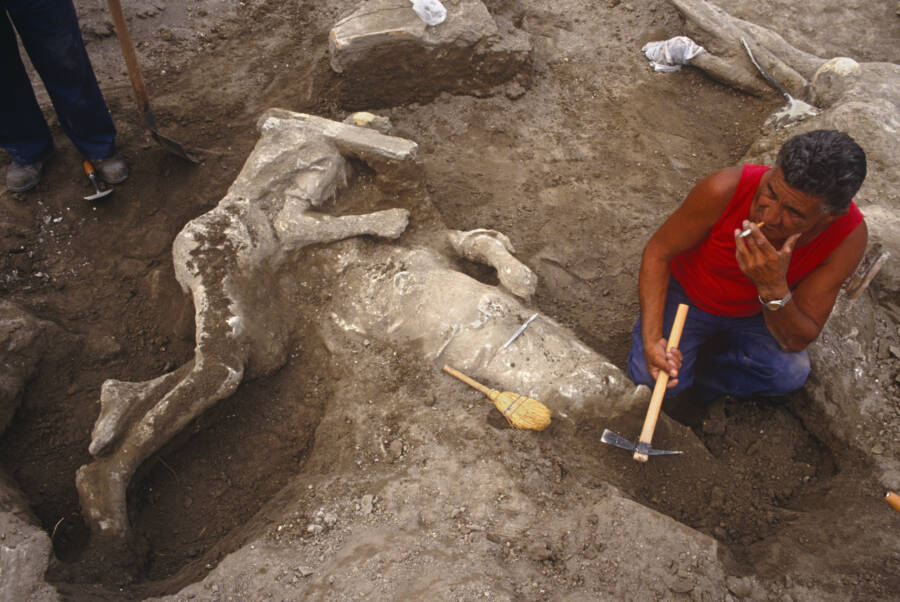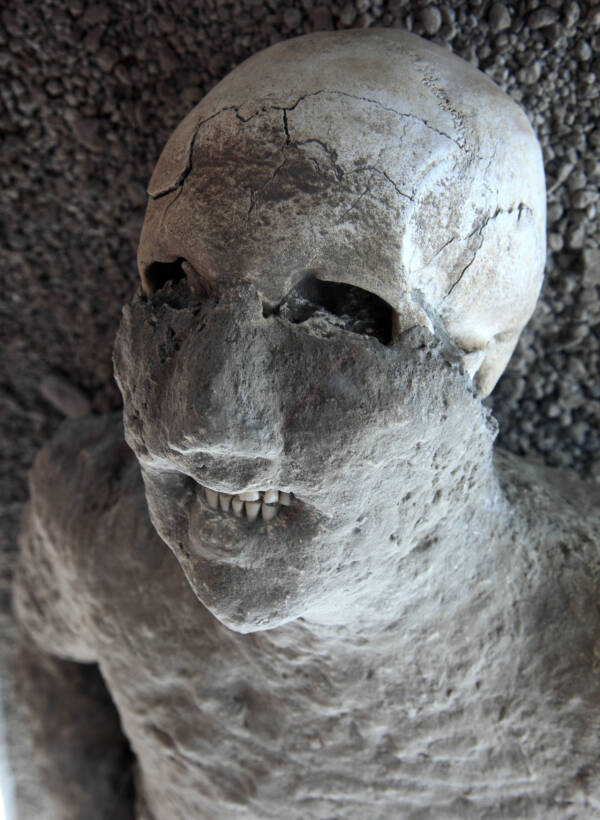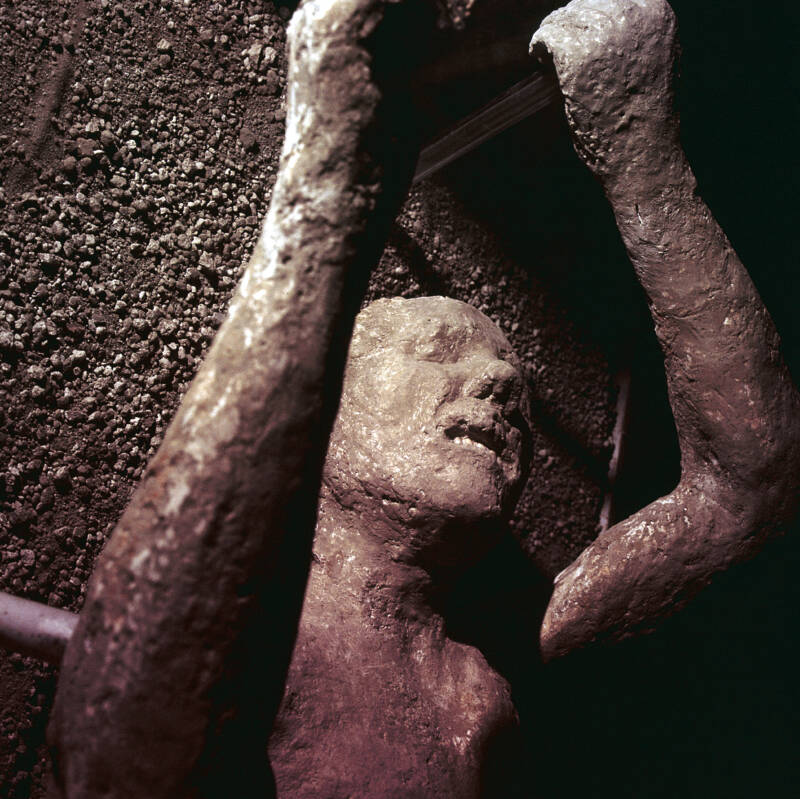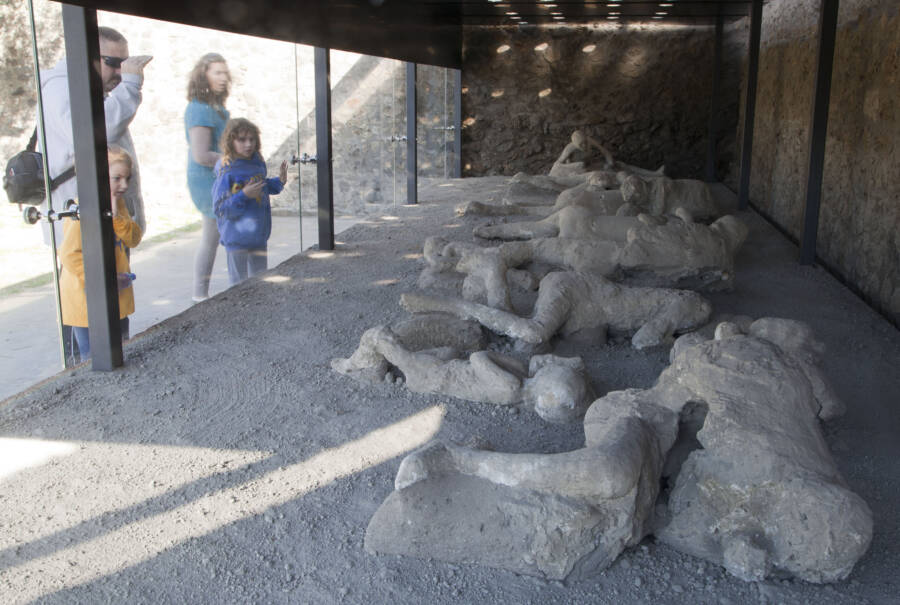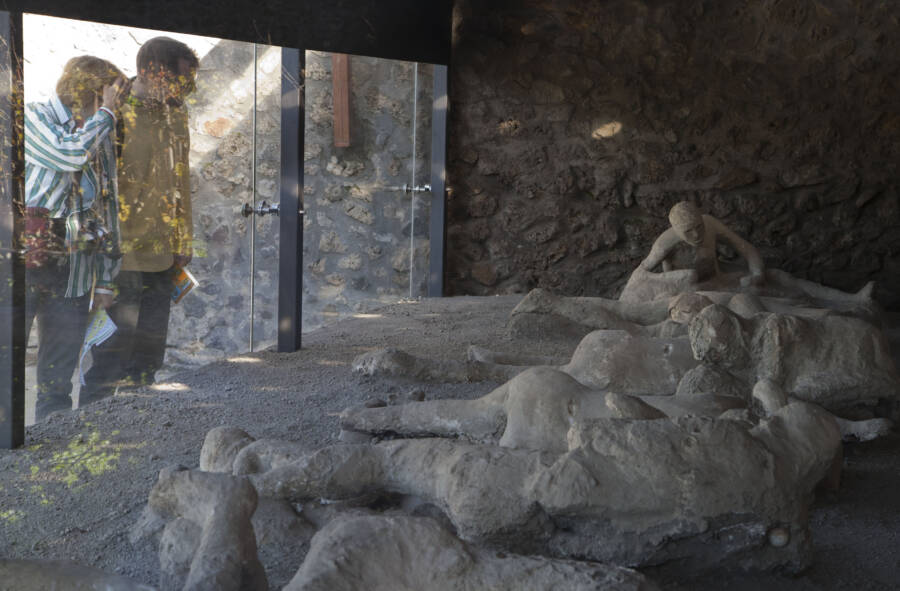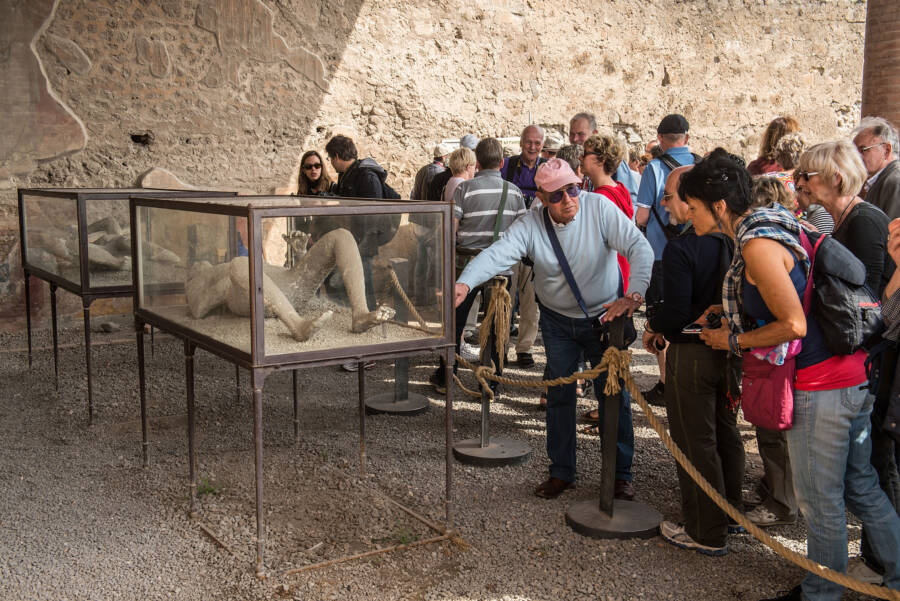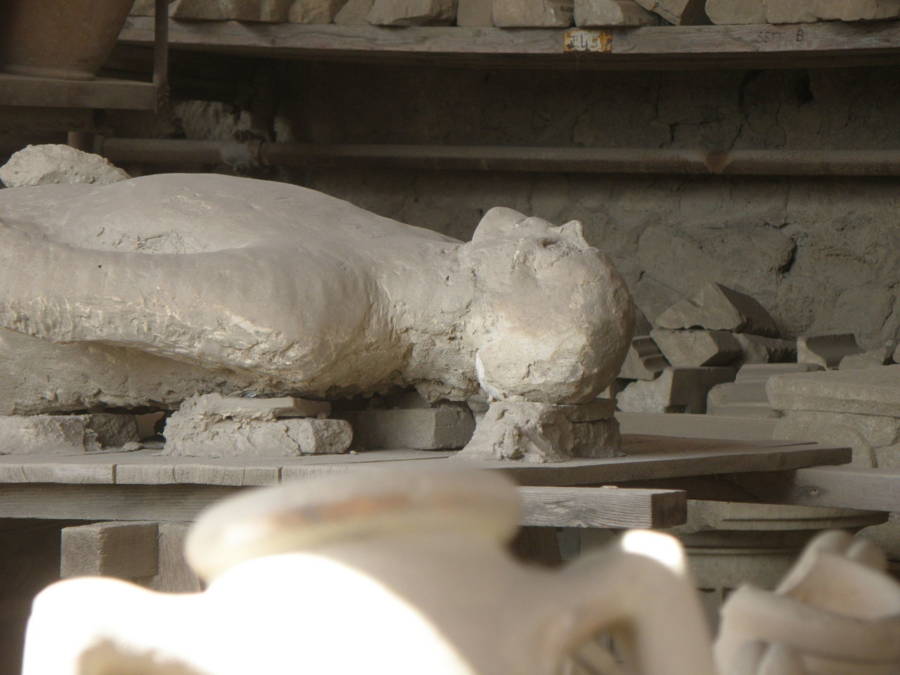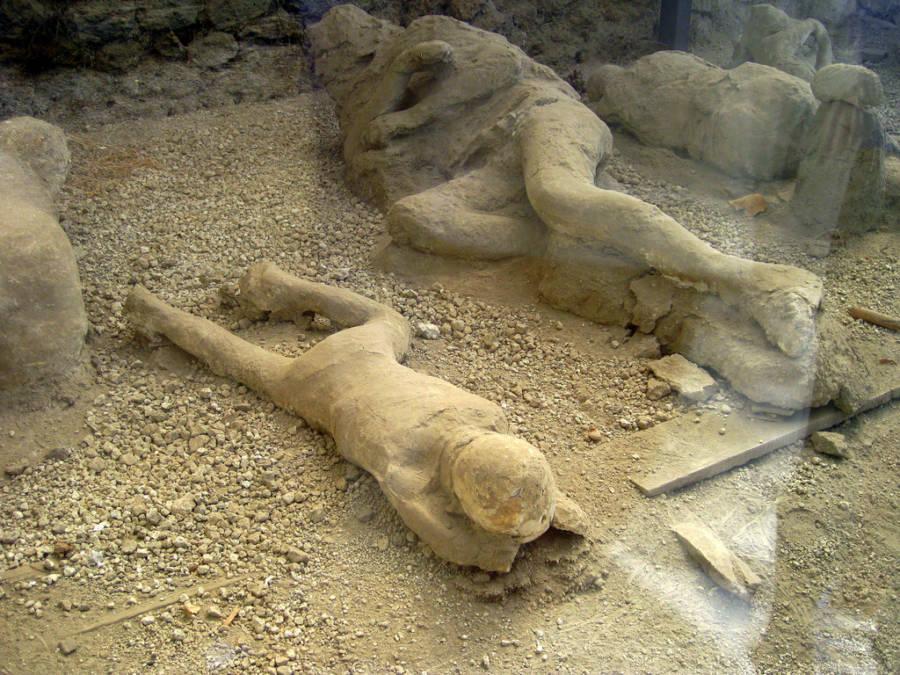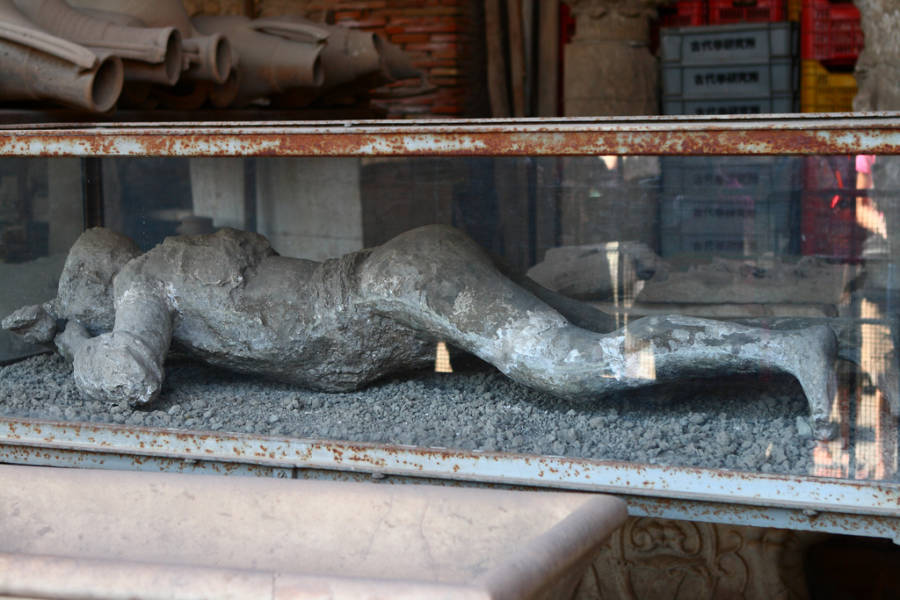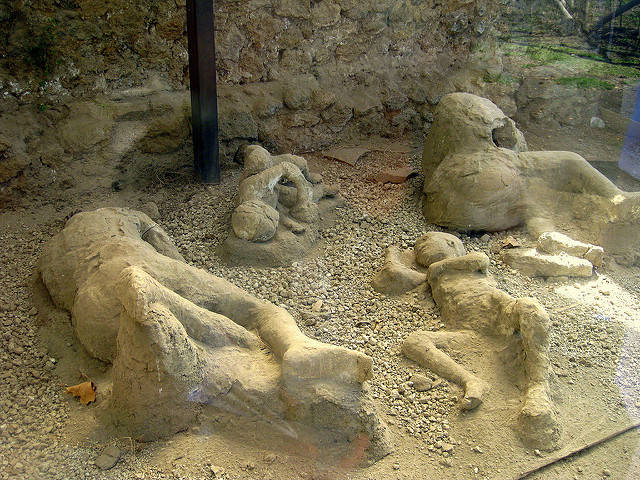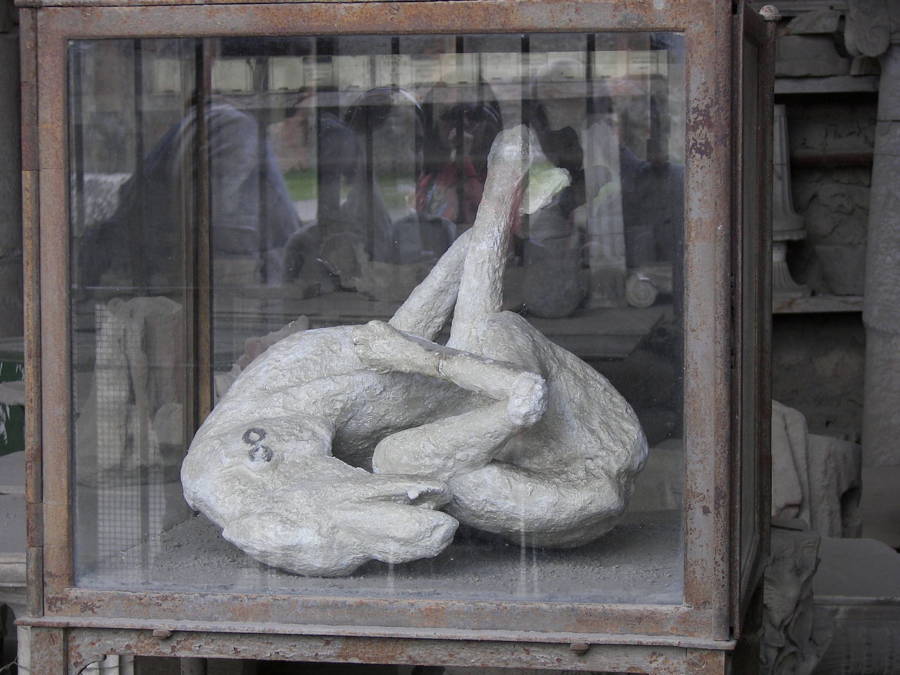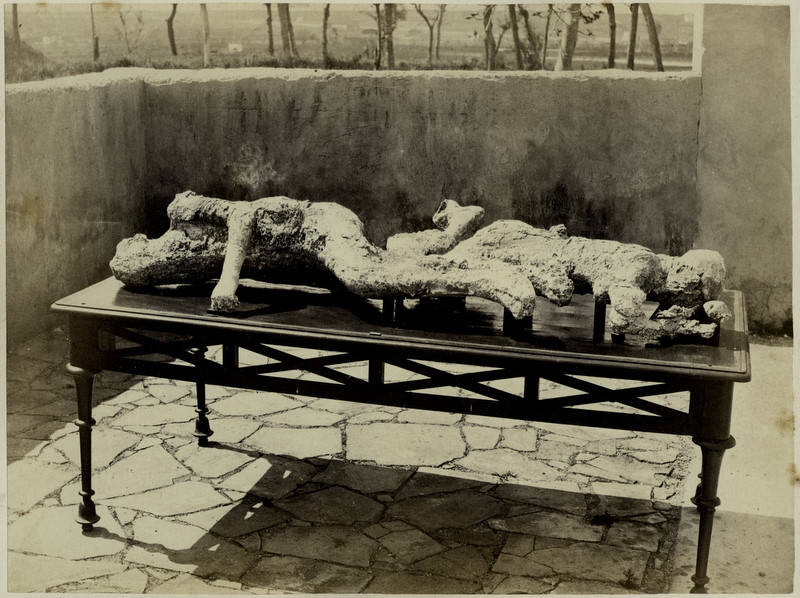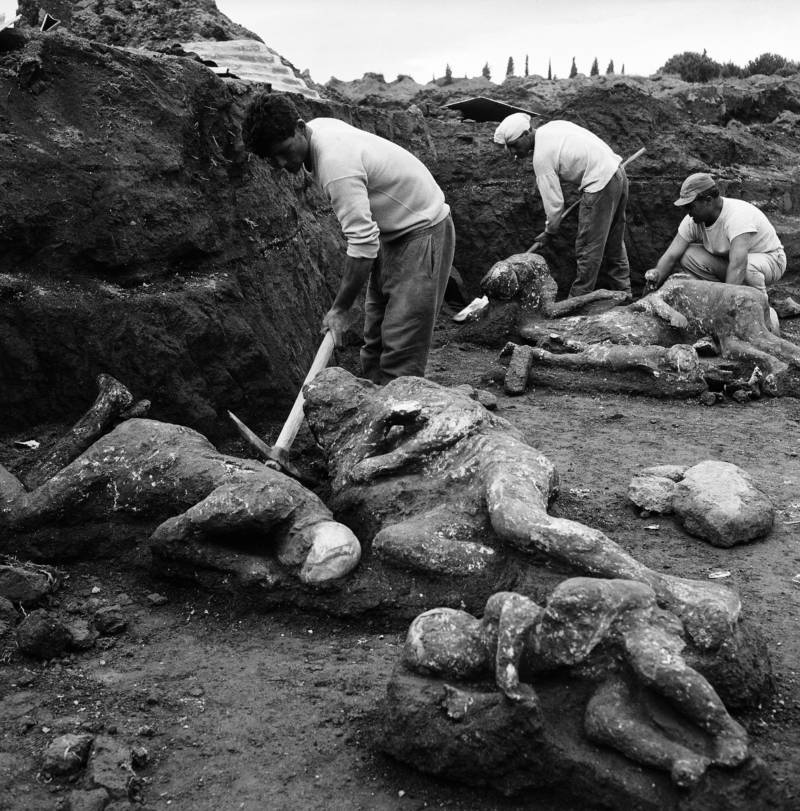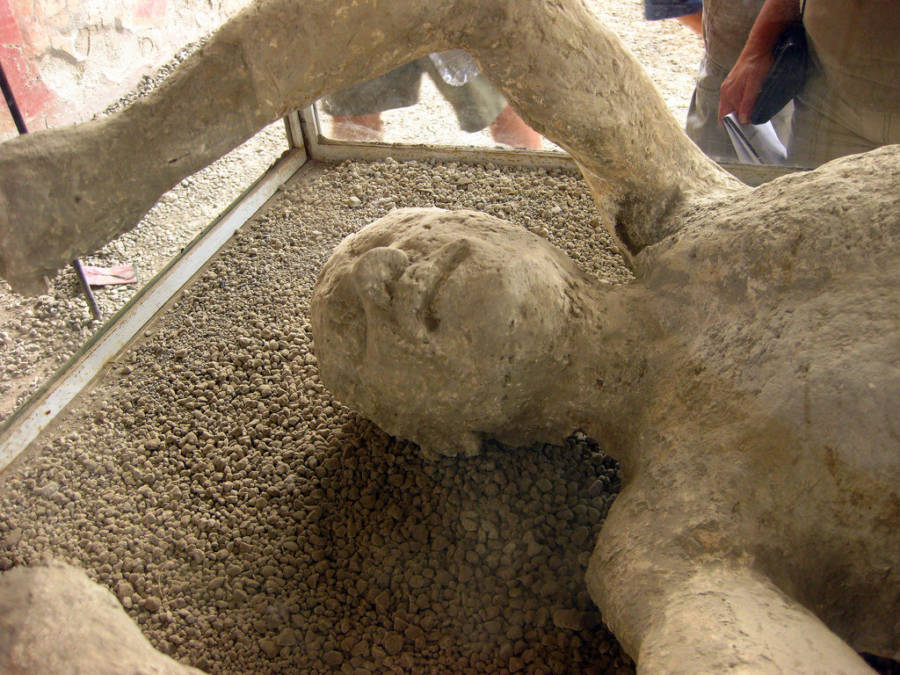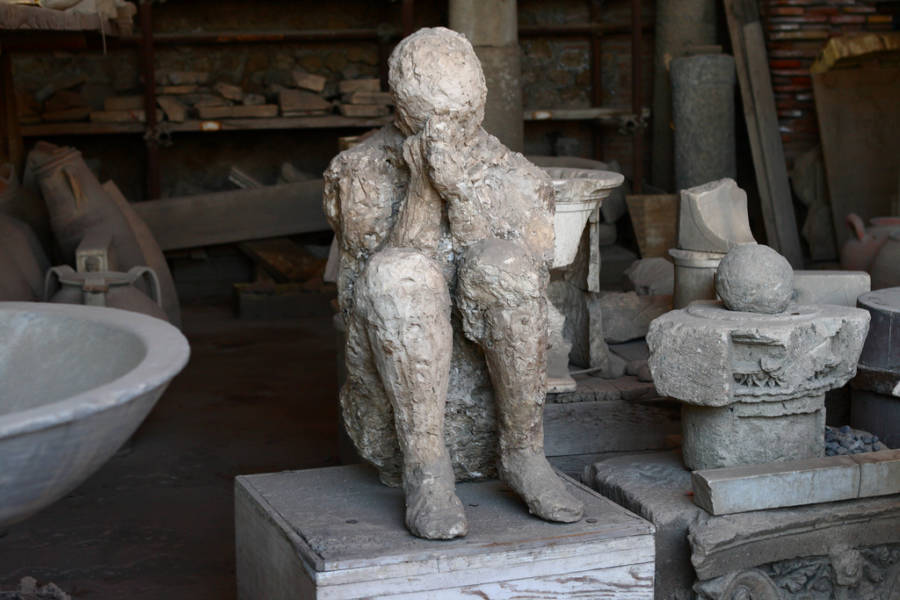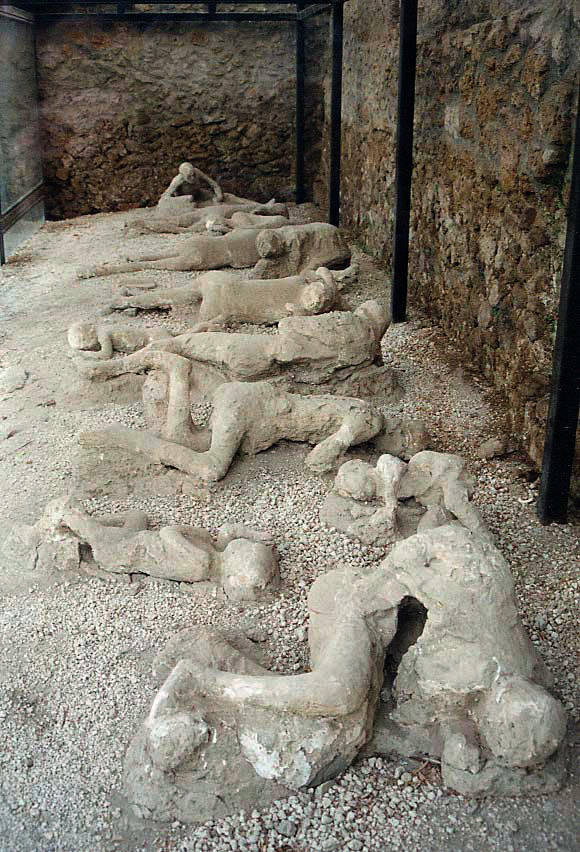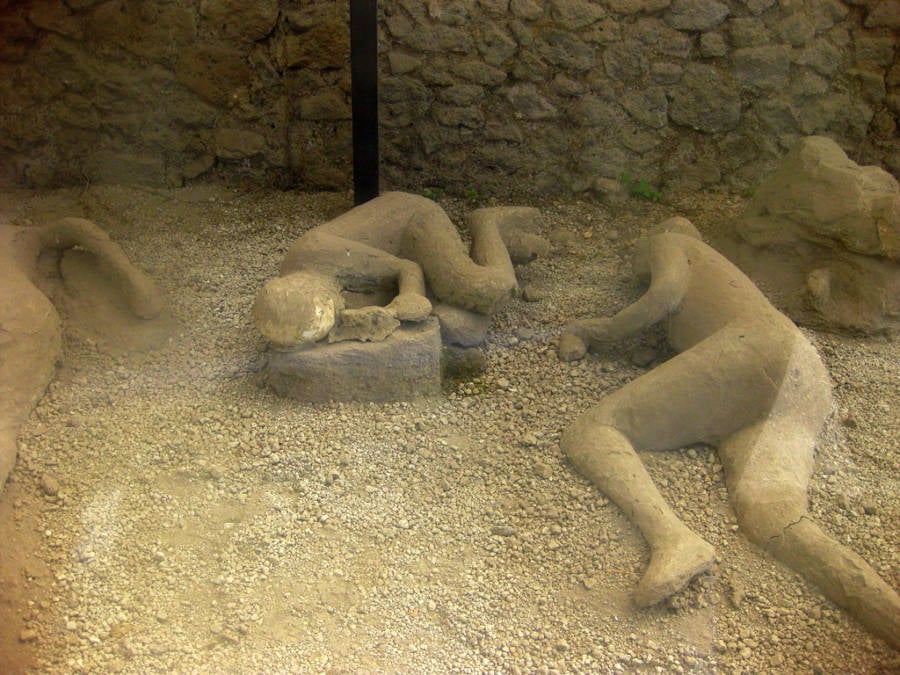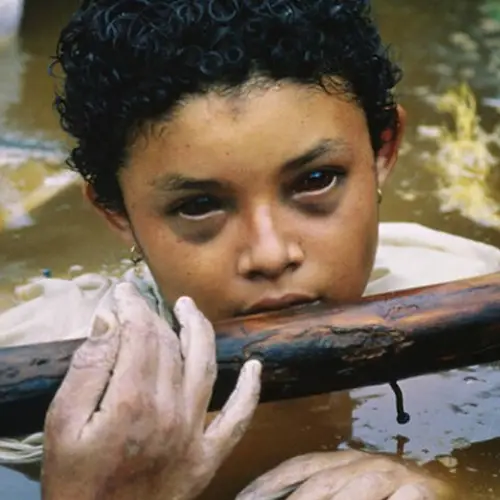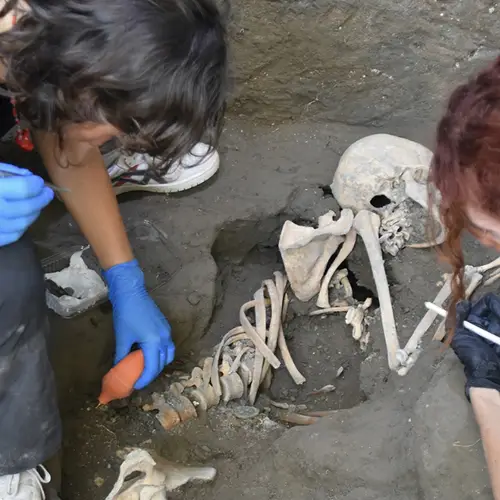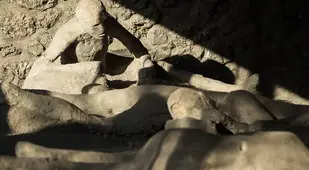When Mt. Vesuvius erupted near Pompeii and Herculaneum in 79 C.E., the volcanic ash left the bodies of the victims frozen in time.
Although the city of Pompeii is striking in itself, the bodies of Pompeii victims give a morbid window into the people who died when Mount Vesuvius erupted nearly 2,000 years ago.
Every year on Aug. 23, the Romans honored their god of fire. And in 79 C.E., amidst days of small earthquakes near Mount Vesuvius, the citizens of Pompeii celebrated Vulcan's feast day as they always did — with bonfires and festivals, hoping to win the favor of the smith-god who labored at his forge inside the mountains.
The modern word volcano is derived from the name of the Roman god, and the people who worshiped him had no idea they were about to become victims of Europe's deadliest volcano eruption.
At about 1 p.m. on August 24, Vesuvius erupted in a cloud of smoke, ash, and toxic vapor. And when it blanketed the city, it killed at least 2,000 people almost instantly. And today, the Pompeii bodies are a chilling reminder of one of the ancient world's most devastating disasters.
The Terrifying Eruption Of Mount Vesuvius
The eruption of Vesuvius began on Aug. 24 and continued into the next day. Residents of Pompeii and nearby Herculaneum who decided to stay put rather than flee met their ends when a blast of ash and noxious gases barreled over the city walls at over 100 miles per hour, killing every living thing in its path.

Wikimedia CommonsA view of Pompeii with Mount Vesuvius visible in the background.
Ash from Vesuvius continued to fall over the cities until they were completely covered in layers of debris that consumed all but the tallest buildings. Ironically, although the blast destroyed Pompeii and Herculaneum, it also perfectly preserved them.
The cities and their citizens remained exactly as they had that summer day in 79 C.E., frozen in time under layers of ash for over a thousand years.
The lost cities proved to be a dream come true for archaeologists, yielding a trove of intact artifacts that remained in almost perfect condition and had lain undisturbed for centuries. Not only had the city structure been preserved right down to the graffiti, but the excavations at Pompeii and Herculaneum provided a truly unique archaeological treasure: actual Romans.
The bodies of Pompeii victims had been covered in layers of fine ash that calcified over the centuries, forming a type of protective shell. When the skin and tissue of the Pompeii bodies eventually decayed, all that was left were voids in the layer of ash around them — in the exact shape of the victims in their final moments.
How Archaeologists Discovered The Pompeii Bodies
Excavations of Pompeii began accidentally in the 18th century when builders constructing a palace for the Bourbon king of Naples discovered the lost city while digging.
When the remains of a young woman were found in 1777, the excavators noticed they could clearly see the outline of the rest of her body in the ash that had encased her. It wasn't until 1864 that Giuseppe Fiorelli, the director of the excavations, came up with an ingenious idea for reconstructing the bodies.

Marco Cantile/LightRocket via Getty ImagesArchaeologists have found more than just human bodies from Pompeii. In June 2022, the archaeological park put the remains of this Maiuri horse that was killed during the 79 C.E. eruption on display.
Fiorelli and his team decided to pour plaster into the voids after discovering several air pockets that indicated the presence of human remains in a street dubbed the "Alley of Skeletons."
They let the plaster harden, then chipped away the outer layers of ash, which left behind the cast of the volcano's victims at the time of their deaths. Many of the Pompeii bodies remain frozen in contorted positions. Some had been trying to shield their faces with their hands, and one mother was found desperately trying to shield her child.
Without the adornments of toga, tunics, or any other clothing that would indicate the period during which they lived, the bodies of Pompeii seem as though they could have been from last year.
The eerily preserved expressions of horror and pain transcend the centuries. The body casts are on display at the Antiquarium of Pompeii, and they provide a powerful reminder that despite the millennia that separate us, the people who lived there were as human as we are.
Who Were The People Behind The Bodies Of Pompeii?
The bodies of Pompeii were all trapped in one final pose, allowing future artists and archaeologists alike to try to ascribe meaning to their last moments. Some victims were caught in positions that seem like loving embraces or stoic acceptance of their fate. Others appear somewhat more active just before their death.

Andreas Solaro/AFP via Getty ImagesCopies of casts of a young slave and an adult at the Antiquarium of Pompeii.
Take the Pompeii body cast of one unfortunate man who died in the Garden of Fugitives. He appears to have died performing one last act of self-pleasure. But contrary to how it looks, the man likely did not meet his demise while "doing what he loved," volcanologist Pier Paolo Petrone told Metro.
"Most of the human victims found in Pompeii often show 'strange' position of arms and legs, due to the contraction of limbs as a consequence of the heat effect on their bodies after death occurred," Petrone said.
"The individual in the photo is an adult man, killed by the hot pyroclastic surge — hot gas and ash cloud which killed most of the population living around Mount Vesuvius — with both arms and legs flexed due to the heat."
Then there are the bodies originally referred to as "The Two Maidens," which appear to be the skeletal remains of an embracing couple who were first presumed to be women. But, archaeologists eventually discovered that they were actually two unrelated men, one age 18 and the other about 40 years old.
Whether they were lovers in life or simply strangers who found each other at the last moments of their lives and held tightly out of fear, archaeologists will likely never know.
Then, there is the "Shackled Slave," a Pompeii body that shows the cruel fate that befell enslaved people in the city. From Pompeii's brothels to regular households, slavery was common throughout the Roman city. While some enslaved people managed to buy their freedom, the state of Pompeii's casts of those still enslaved show that it was never guaranteed.
The "Shackled Slave" is one of these victims. His enslavers left him chained to a wall when Vesuvius erupted with no hope of escaping. Archeologists discovered his body face-down on the floor, a tragic end that illustrates a far darker side of Roman life.
After reading about the bodies of Pompeii, check out 35 photos of a town frozen in time by a nuclear meltdown. Then, see these haunting photos of people just before they died.
